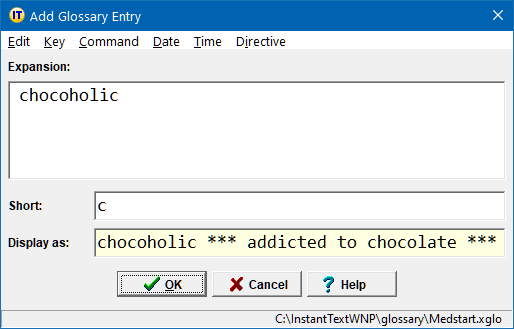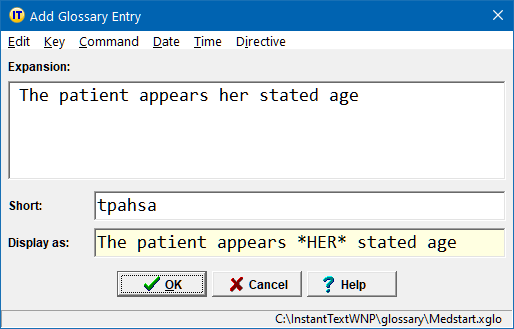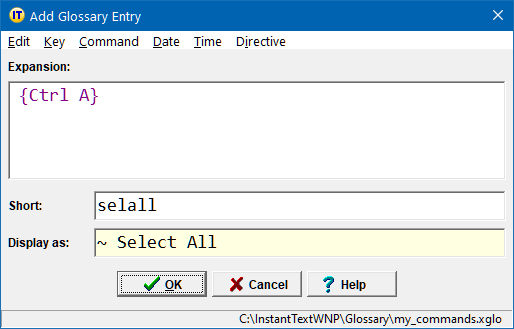Display Form
By default a glossary entry expansion is displayed in an Expansion Table when it is a potential expansion for the typed abbreviation. But there are cases where you may want to use the display form to display some alternate text.
You have complete freedom of choice for the display form, with an exception for Word Entries, where the display form must start with the expansion: in this case it acts as a suffix that will be displayed but not expanded.
The idea is to use the display form to display some text that conveys what expansion will be produced.
Examples
In the following example we have used the display form to add the comment *** addicted to chocolate *** to the Word Entry with the word chocoholic.

In the next example we have emphasized *HER* in the display form, in order for our eyes to immediately distinguish this phrase from its variation using his instead of her.

Display forms are also ideal for glossary entries with commands.
In the following example we defined a
glossary entry
with the keyboard shortcut
Ctrl A and a
display form of ~ Select All
which will turn out to be a lot more readable in the
Phrase Expansion Table than
{Ctrl A}

Note that here, as a convention we use a ~ prefix in our display form, so that when it pops up in the Phrase Expansion Table, we immediately recognize that it is a command entry. You are, of course, free to use your own convention for command display forms.